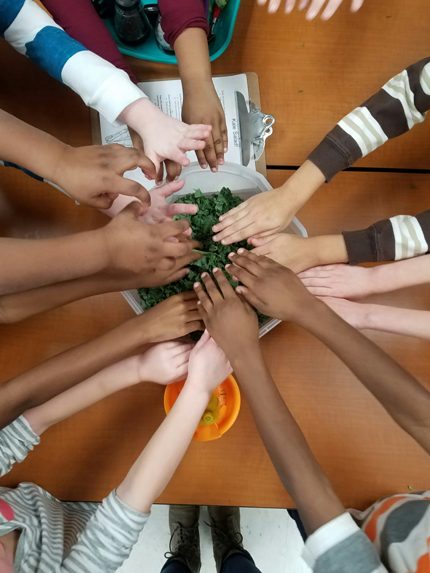
02 Mar 2017 Gardening together as a family
by Sarah Lane
It can seem daunting to start a garden, but all the Conway Public Schools broke ground to build an outdoor learning garden, and so can you! Seeing your hard work turn into a beautifully ripe tomato that sprays juice all down your hands when you pop it into your mouth is what it is all about.
Here are five steps to start a family garden:
Garden placement
Do you have a sunny spot outside your house or apartment that you could grow vegetables in? Or would building a raised bed better suit your family’s needs and comforts? Or if you are tight on space, do you have a sunny spot in your house that you could start a mini container garden?
Whatever space you choose, make sure it is accessible for everyone in your family.
Get your family excited about the garden by sitting down and having a garden meeting. Make some healthy snacks like kale salad, some finger sandwiches and fruit skewers so that everybody has a chance to talk about what they want the garden to be used for.
A great activity would be to have everybody draw a garden that they would love to spend time in. Write down a favorite thing from each, and you have built the foundation of your garden. Finish the meeting by picking a date to build your garden space to root your idea into place.
Work the ground
Today is the day the garden will be made. Start the day off with a quick 5-minute reminder of your family’s favorite garden attributes, and then jump right into it! Everybody can grab a shovel and start digging into the dirt.
Once your garden space has been defined and the soil is loose and broken up, grab a bag or two of compost and mix it into your new garden space. Nothing is more important than soil health! Having loose nutrient-rich soil will allow your plants to form strong roots, grow tall and create delicious produce.
Afterward, celebrate the garden space with cucumber- or lemon-infused water and a big healthy meal. You have been working hard and what better way to acknowledge a job well done than to sit down to a family meal that makes you excited to start growing a garden. Great options would be whole wheat pasta with a vegetable sauce, an Asian stir fry with brown rice or an upscale grilled cheese with lots of vegetables and some tomato soup.
Pick seeds or buy transplants
Let the fun continue! Look in your kitchen or go to a grocery store and pick two to five fruits and vegetables that your family really loves to eat. Cherry tomatoes, peppers, lettuce, cucumbers, squash, beans and watermelon are all really popular choices at Carolyn Lewis Elementary School in Conway. Seeds and transplants can easily be found in stores as we head into spring.
After you purchase the seeds/transplants, sit down for another garden meeting. A great way to keep everything organized is to create a mini garden calendar that shows when you planted which seed; that way you can count forward to when the plant will be ready to harvest. Keep timing in mind — do you want all of your lettuce to be ready at the same time, or would it be better to space out the lettuce planting over the whole month?
Finish the garden meeting off with a family cooking night using the fruits and vegetables that your family chose. How about trying a vegetable quiche with a cucumber bean salad and watermelon slices on the side? Be creative and see what you and your family can come up with!
Tend for the garden
In a few days, you will start to see little sprouts coming out of the ground! This is my favorite part of gardening. I feel proud, rewarded and excited about what is going to come. It is important that you care for your sprouts and little plants. They need about 1 inch of water a week. A simple water test is to stick your finger into the soil, and if it feels dry, it is time to water.
It is best to do a heavy watering instead of multiple shallow waterings, as this encourages young plants to develop deep roots. Keep a watchful eye on the garden and take a couple minutes every few days to make sure there are not any weeds competing for light, resources and water.
Lastly, to develop strong gardening skills, read up on simple techniques to increase your harvest. An easy trick is to have each family member pick a book focused on one of the fruits or vegetables. Give them time to read the book and then report back their findings. For example, tomatoes like to be supported, and peas like to climb up a trellis.
Harvest and enjoy
It is finally time to reap the benefits and enjoy the fruits of your labor. Celebrate frequently with your family by harvesting and cooking together. Remember that delicious meal you made after you decided what fruits and vegetables you wanted to grow? Why not give that recipe a try again. I can promise you the flavor will be even better!
Editor’s note –
Sarah Lane is the FoodCorps service member at Carolyn Lewis Elementary. She educates students and adults about Farm to School programming through hands-on gardening, cooking and nutrition classes, healthy school meal development and the creation of a schoolwide culture of health. A Seattle native, she received her bachelor of science degree in ecology and a bachelor of arts degree in Spanish at Washington State University. FoodCorps connects kids to healthy food in school so they can lead healthier lives and reach their full potential.











